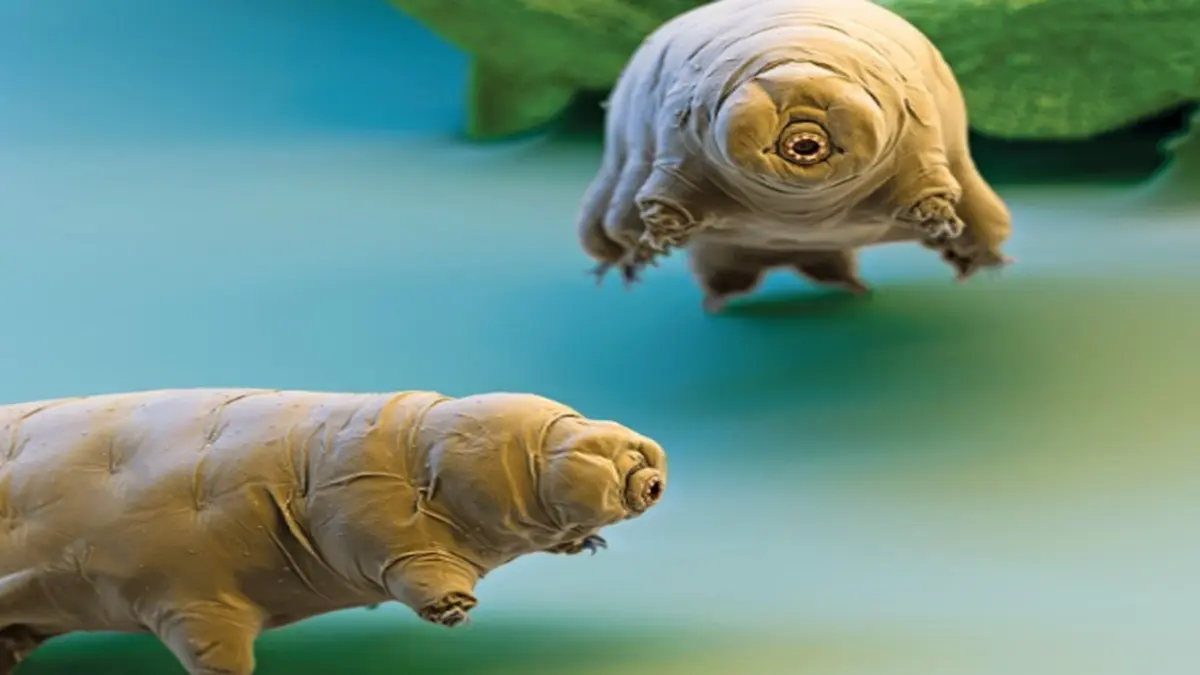Updated 18 April 2025 at 14:18 IST
What Are Water Bears? The Tiny Creatures ISRO May Send to Space With Axiom-4
Tardigrades, nicknamed “water bears” or “moss piglets,” are tiny, eight-legged micro-animals renowned for their almost indestructible biology.
- Science News
- 3 min read

New Delhi: India is inching closer to its most immersive space experiment yet—and it involves some of the toughest creatures on Earth: tardigrades, also known as water bears.
While an official announcement is awaited, reports claimed that the Indian Space Research Organisation ( ISRO ) is preparing to be part of a unique experiment aboard the International Space Station (ISS) as Wing Commander Shubhanshu Shukla gears up to fly on the Axiom-4 mission.

India’s First Astronaut Aboard the ISS
Shukla, a test pilot with the Indian Air Force, will not just be travelling to the ISS—he will pilot the SpaceX Dragon spacecraft and become the first Indian to live and work aboard the orbital laboratory.
His mission spans 14 days, during which he will conduct multiple microgravity experiments. One of the most intriguing among them is the Voyager Tardigrades experiment.
Advertisement

What Exactly Are Water Bears?
Tardigrades, nicknamed “water bears” or “moss piglets,” are tiny, eight-legged micro-animals renowned for their almost indestructible biology. Measuring barely 0.3 mm to 0.5 mm in length, they require a microscope to be seen.
Discovered in 1773, these creatures can survive:
Advertisement
- The vacuum of space
- Intense cosmic radiation
- Extreme heat and cold
- Crushing pressures and dehydration
Found everywhere from mountaintops to ocean floors, these resilient creatures possess claw-tipped legs, a segmented body, and a survival toolkit unmatched in the microscopic world.
What Is the Voyager Tardigrades Experiment?
The Voyager Tardigrades experiment is one of seven Indian scientific studies scheduled for the ISS. It will examine:
- Revival of dormant tardigrades in microgravity
- Reproduction: eggs laid and hatched in space
- Gene expression: comparing space-grown versus Earth-grown populations

Why Send Tardigrades to Space?
Tardigrades are considered biological goldmines for space research due to their extraordinary survival mechanisms. These microscopic creatures can repair DNA after damage, survive complete desiccation by entering a state of suspended animation known as the “tun” state, and withstand extreme levels of cosmic radiation.
Their resilience makes them ideal models for studying the effects of long-duration space travel on living organisms.
By understanding how tardigrades endure such harsh conditions, scientists can develop better astronaut protection systems, advance cryopreservation techniques, and drive innovations in biotechnology that could benefit both space exploration and life on Earth.
What This Means for India's Space Future
The insights gained from the Voyager Tardigrades experiment may not just expand our understanding of life’s boundaries—it could play a key role in shaping the Gaganyaan human spaceflight mission and beyond.
As India takes bolder steps into space, its collaboration with Axiom and SpaceX shows a growing commitment to cutting-edge research and global partnerships—with tardigrades leading the way into the unknown.
Published By : Surabhi Shaurya
Published On: 18 April 2025 at 14:12 IST
